Violence in Anime: Helpful or a Hindrance?
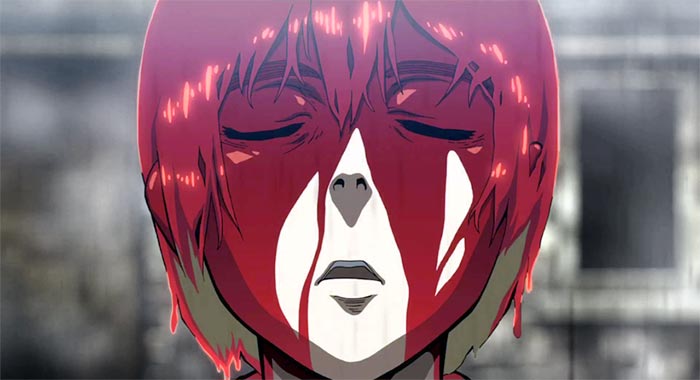
There are multitudes of anime series out there, many of which feature violent themes or aspects of gore that some may find to be excessive or unnecessary. But is it? Violence presented in anime is varying, and typically the level of gore depends on the genre of anime being viewed. Anime that is included in the Shoujo genre, for example, will likely feature little to no violence; if violence is featured in a Shoujo anime, it is often mild and lacks the shock value gore may offer. However, what is present in many Shoujo anime- Ao Haru Ride and Tonari no Kaibatsu-kun, for example- is romance. Romance is a trope typical of the Shoujo genre, and is a way to immediately identify an anime as being included within that genre as well. When one considers the Shoujo genre’s repetitive use of romance as a driver of the plot, it becomes easier to see why anime that fit more into Seinen and Shonen also have their own plot driver: Violence.
So is violence really that unnecessary for anime to use; and does it, as many have argued, detract from the plot of the show in question? This article will explore themes of gore and violence present in anime, and how this violence contributes- or potentially detracts- from the plot and the enjoyability of the show. In order to explore this idea further, this article will investigate the presence of violence in several popular series; each of these anime uses violent themes in vastly different ways that are unique to their respective storylines, and so it is first essential to understand the plot of each.
**SPOILERS AHEAD**
Tokyo Ghoul and Attack on Titan: Violence and Character Development
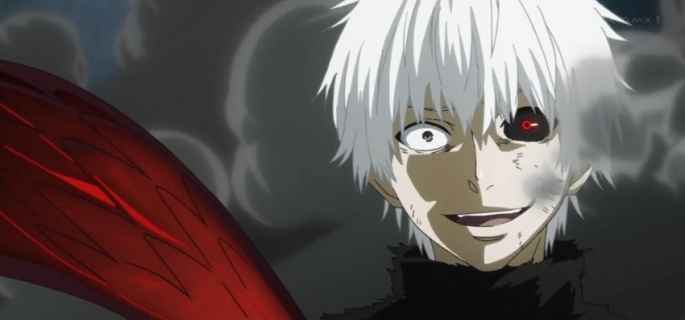
Sui Ishida’s Tokyo Ghoul has been popular in recent years. It is an action packed horror thriller anime that revolves around the life of Ken Kaneki, a young man who is studying literature. He is first introduced as a mild-mannered human boy who has a crush on a girl he sees at a coffee shop that he frequents. As it turns out, the girl (whose name is Rize) is a Ghoul; Ghouls in Sui Ishida’s fictional world are humanoid creatures that must eat humans in order to survive. After surviving a Ghoul attack, Ken is horrified to discover that he has become a Human-Ghoul hybrid as a result of a life saving transplant surgery. It is interesting to watch Ken’s transformation from a timid human, to someone who views himself as “half-n-half”, to a full-fledged Ghoul. By the end of the series, it seems that Ken has come to identify much more with himself as a Ghoul than himself as a human.
The rhetoric that humans use when mentioning or discussing Ghouls is one of placing the Ghouls as “lesser than”, as mattering less simply because they are predators that need human flesh. In the first few panels of the manga, one reads as Ken and his best friend Hide are discussing Ghouls, wondering if they “even exist” while airily accusing Ghoul specialists featured on the news as being Ghouls themselves. While this may seem like harmless curiosity, it can also be viewed as a form of implicit structural violence that subtly places the Ghouls in a position of a mystical and threatening “Other”, one that is not real, or if they are, do not belong in the world at all. To make this verbal mistreatment more obvious, one could also refer to Ken’s first meeting with Touka, the female lead, who is a Ghoul working at the coffee shop Anteiku. Upon seeing Ken’s distress about eating human flesh, Touka attempts to help him. She is brutally rebuffed by him, and he screams at her about not being “one of you monsters”. This interaction, and several others following, is an example of the violence committed by regular human citizens toward the Ghoul community. This sort of violence is less obvious than the blood and gore that comes to mind when fans think of the show, and perhaps the violence that the show is more known for acts as a way of making these subtle acts of violence more obvious.
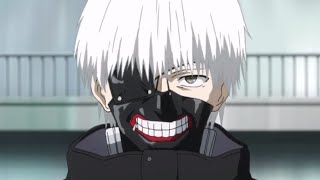
The height of Ken’s transformative journey occurs during his stint of being captured and tortured by Yakumo Oomori, a member of Aogiri Tree and a prominent figure in the Thirteenth Ward that many of the series’s main characters inhabit. During this time Ken is subjected to various forms of torture, most of them being extremely gory (the list varies from run of the mill torture methods such as the removal of fingernails, to more insidious methods like having a centipede inserted into his ear). Whilst Yakumo is busy torturing Ken, Ken has receded into the depths of his own mind to escape the violence occurring. Thus an internal narrative emerges as he faces his inner Ghoul in the form of Rize, who he has spent the better part of the series desperately trying to reject; Rize begins to goad him while Ken has flashbacks about his mother who died when he was young. The juxtaposition between the way his mother taught him to live- passively and, more notably, peacefully- and how Rize is insisting he should live his life now– independently and violently- further highlights the pivotal role that violence plays in Ken’s narrative. It is only after Ken rejects his mother’s views and “eats” Rize that he is able to give into his Ghoul side and accept himself for who he is.
The role that violence plays within Ken’s narrative is absolutely necessary. While some may argue that the gore of cannibalism, torture, and fighting in general is over the top and detracts from the plot, without the violence could Ken have transformed and come to see himself as a Ghoul at all? The violence in Tokyo Ghoul in many ways acts as a catalyst for Ken’s metamorphosis. Additionally, as a Ghoul Ken is for the first time able to observe the implicit and explicit violence directed toward the Ghouls by individuals, government bodies such as the CCG (Commission of Counter Ghoul) and the Doves (Ghoul investigators), and even from Ghouls themselves (the Qinx, for example, who are half-Ghoul hybrids that work for the CCG to incapacitate and eliminate other Ghouls).
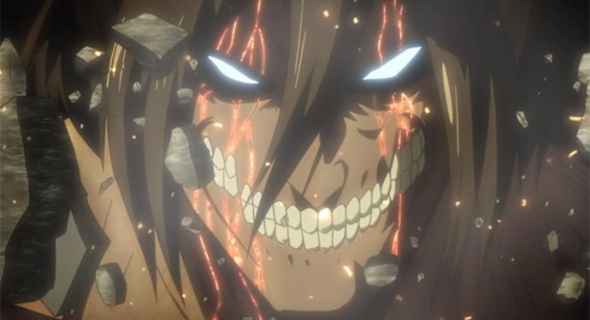
Hajime Isayama’s Attack on Titan and the way violent themes present themselves is strikingly similar to Ishida’s use of violence in Tokyo Ghoul. Like the fictional world Ishida creates, Isayama’s series focuses on a post-apocalyptic world in which humankind has been pushed to the brink of extinction by humanoid creatures called Titans. Like Ghouls Titans also feed on humans, although Titans do not need to eat in order to survive. The main protagonist of the series is Eren Yaeger, whose life we follow from his time as a young boy to the present day of the series where he is in his early teens. Eren’s personality is unlike Ken’s at the beginning of the series in that he is brazen, outspoken, and could be considered very brave in the face of the tough conditions that he lives in, even though he is arguably just as physically weak in the beginning of the series as Ken Kaneki. Following his parallel with Ken Eren undergoes a transformative journey both physically and mentally, sparked by witnessing the gruesome death of his mother at the hands of a Titan.
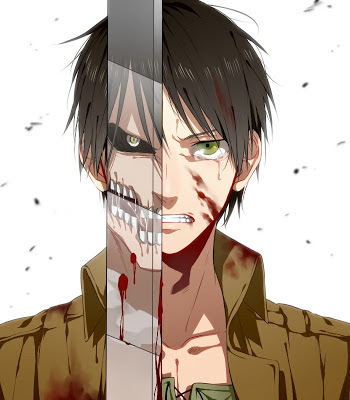
The start of Eren’s transformation is marked by his witnessing the death of his mother at the hands of a Titan. Although his mother’s death is extremely gruesome, it is almost overshadowed by the violence surrounding Eren and his friends, Armin and Mikasa, once the wall is breached and Titans begin to pour into the city. Eren is shown being dragged away from his mother surrounded by rubble, blood, crushed bodies and the screams of other people in the city; he watches over the shoulder of the man who saved him as his mother is bitten in half. This sparks a viceral need for revenge deep in Eren’s psyche, and is the driving force he uses to push himself through tactical training and make it into the Scout Regiment. Without this violence in his youth, Eren very likely would not have become the character that everyone has followed eagerly throughout the series.
After joining the Scout Regiment, which is a group of soldiers who venture out beyond the protective walls that guard humanity from the Titans, Eren is discovered to possess the power to turn into a Titan himself. Like Ken, Eren’s transformation from a weak young boy to strong warrior whom the fate of many rests on is sparked by violent actions that result in a transcendence to a new realm of existing where he is neither human nor Titan, but somewhere in between. Similar to the Qinx featured in Tokyo Ghoul, who are Human-Ghoul hybrids who assist humans in subduing the looming Ghoul threat, Eren is constantly subjected to acts of discriminatory violence at the hands of his fellow Scout Regiment soldiers. Despite being an ally, the other soldiers often mistreat Eren simply on the basis that he can transform into a Titan. At various times he is kept chained in a basement, is constantly verbally berated, and on several occasions he is attacked by his fellow countrymen. The discrimination performed by Eren’s allies is a violence that is much more subtle than the Titan’s treatment of the humans. However, once it is revealed that the Titans may actually be humans, one has to wonder if human and Titan behavior is really so different.
Psycho-Pass and Elfen Lied: Violence and Emphasis
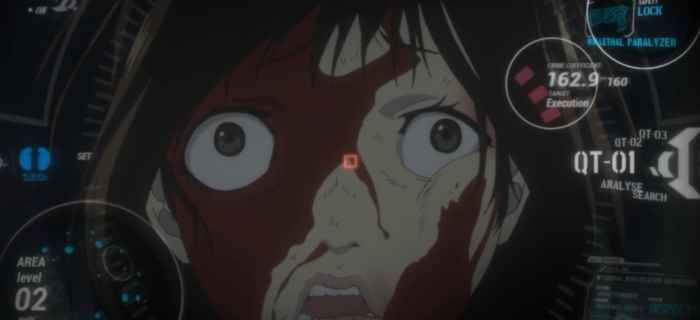
Gen Urobuchi’s Psycho-Pass uses violence in a somewhat different way from Attack on Titan and Tokyo Ghoul. Psycho-Pass takes place in a fictional world where the citizens of Japan are governed by a totalitarian entity called the Sibyl System. The regime that Sibyl has put in place is blatantly utilitarian, allowing people to remain in society only insofar as they behave themselves according the laws of Sibyl and continue to be useful members of society. With Sibyl as the primary mode of governing in this new world, the people of Japan have sacrificed human agency in favor of an omnipotent technological sovereign entity. The Sibyl System uses a panoptical collection of cameras and sensors placed all over the cities in order to monitor citizens’ psycho-passes. A person’s ‘psycho-pass’, which is the series’ namesake, is a twofold system of measurement that includes a person’s ‘hue’ (overall psychological state) and a ‘crime coefficient’ (a measurement of how criminally inclined an individual is). Sibyl also uses the psycho-pass system to dictate what sort of job you are able to get, if you are allowed to remain in society at all. By using the psycho-pass system, Sibyl is not only able to control the citizens’s thinking and behavior, but is able to dictate their lot in life based on how closely individuals align with Sibyl’s ideals. Whereas Tokyo Ghoul and Attack on Titan utilize violence mainly as a catalyst for the necessary evolution of the hero, Psycho-Pass employs gore to highlight the more subtle structural violence present in the series’s dystopian setting.
There are several ways in which the obvious violence of the show parallels and highlights the more subtle methods of violence present in the world of Psycho-Pass. Firstly, we have the violence that Sibyl is performing upon the citizens. Sibyl’s method of control, using constant surveillance in order to stamp out humanity’s free will, successfully destroys the threat of potential resistance from the citizens of Japan. As a sovereign entity, the way in which Sibyl governs is reminiscent of a term coined by Michel Foucault: Biopolitics, or the social and political power over life. As Foucault explains throughout his work, sovereign entities of the past often exercised their power through their ability to take away life, or to allow its continuance. In the same way, Sibyl is able to order the execution of any citizen at any time. If they behave, they are granted continued life within Sibyl’s dictated limits.
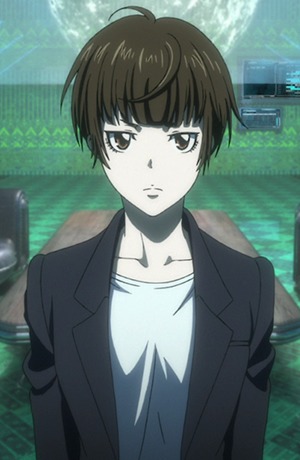
The arm of Sibyl’s law in the world of Psycho-Pass is the Public Safety Bureau (hereon the MWPSB). The MWPSB is dictated by a hierarchy organized by Sibyl. There are Inspectors, people who have been placed in the MWPSB after careful assessment, and Enforcers, who are people that Sibyl has determined to be “latent criminals”; as latent criminals, Enforcers would typically not be allowed back into society. However, Sibyl grants them limited freedom in exchange for doing the dirty work that the Inspectors are not able to perform, for to do the Enforcer’s work is to fundamentally fall outside of Sibyl’s laws and become a criminal. Although Enforcers play a pivotal role in keeping the peace in Sibyl’s world, they are constantly subjected to discrimination. Likewise, other latent criminals who are not granted the status of Enforcer are subjugated to discrimination as well as physical violence. The brutality to which these criminals are subjected is best illustrated by the primary weapon of the MWPSB: The Dominator Portable Psychological Diagnosis and Suppression System, simply known as the Dominator. The first function of the Dominator is to measure a perpetrator’s psycho-pass in order to diagnose whether or not they may be integrated back into society. However, if the Dominator concludes that the person is beyond help, it switches to an offensive mode called Lethal Eliminator. When used, this mode annihilates the perpetrator in a brutal way, oftentimes leaving behind only a puddle of blood and guts.
The violent themes present throughout Psycho-Pass, therefore, may have more to do with bringing the subtle violence employed by Sibyl out of the shadows than for dramatic effect. Not only does Sibyl structure its new society in Japan around the constant threat that at any time it may remove you from society, either by incarcerating you permanently or simply by killing you, but Sibyl also constantly displays its apathy for citizens that do not fit its constraints through the necroviolence which pervades the show. Necroviolence, a term first used by Achille Mbembe, describes the treatment of the [human] body as it is killed, or after it has been killed. Since the Dominator for all intents and purposes implodes its target, this method of killing is not only extremely violent (highlighting further Sibyl’s disregard for humanity), but it also acts as a method of erasure since there will not be a body to mourn. Sibyl’s blatant devaluing of the human- alive or dead- is captured best by the serial killer Rikako Oryo, one of the show’s antagonists. Mirroring Sibyl’s disregard for the post mortem human form, Rikako’s artwork- which she creates with the bodies of her victims- is disturbing not just in of itself, but because it draws attention to the violent world that Sibyl, a technological entity meant to uphold the peace, has created for humanity.
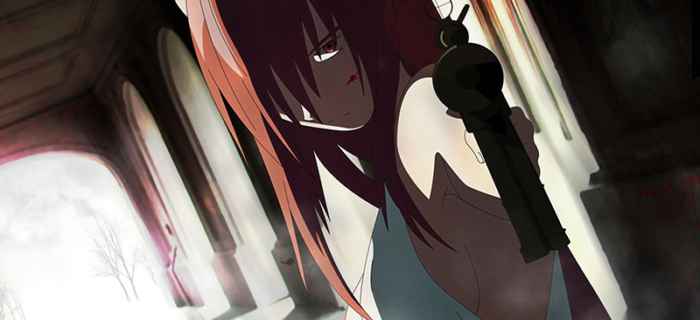
Lynn Okamoto’s Elfen Lied is arguably the most violent of the anime explored here. This series’s release left behind a notorious legacy unlike any other, and was the subject of several controversies due to its overtly transgressive content which some called “over the top”. Despite the blatant gore and in your face nudity Elfen Lied may be considered an extremely influential series, having been cited as an inspiration to the creators of Stranger Things. Like Tokyo Ghoul, Okamoto’s fictional world also features humanoid creatures who are rejected by society and treated as the threatening “Other” due to fear. These creatures are known as Diclonii, which are marked by telepathic powers utilizing invisible arms called Vectors. Diclonii are shown to be extremely oppressed, either being brutally murdered or caught and experimented upon.
Depending on how one views the show, the Diclonii may be considered the protagonists or the antagonists. Throughout both the show and the manga Diclonii are often portrayed as being at odds with humanity; the reason for the tensions between the Diclonii and humans is never quite pinned down, but can most easily be pinpointed to the treatment of the Diclonii by the humans. As explained in the series the Diclonii are subjected to extreme oppression by humans, and it has even been mentioned that many were euthanized at birth. However, though it is emphasized more in the manga, many Diclonii claim to hear a voice in their heads commanding them to kill humans. Due to this some humans postulate that God has chosen the Diclonii to inherit the Earth, claiming that the violent tendencies of the Diclonii towards humans is in their DNA, driving them to wipe out humanity and repopulate the Earth with their Diclonii offspring.
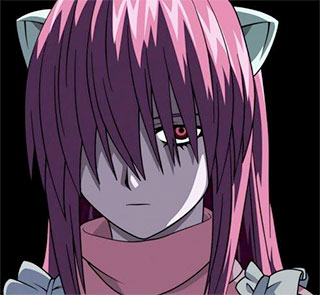
While it becomes cloudy throughout the series whether the Diclonii originate from a genetic mutation, a virus, or (somehow) both, one cannot ignore the overt themes of racism that are present throughout the series. Like other minorities today the Diclonii are constantly oppressed and are subjected to intense discrimination from their childhood. While Diclonii are often looked down on by humans and are teased for being “freaks”, this illustrates the paradoxical space that a Diclonii occupies for humans: one that is simultaneously less than, un-human and non-threatening, but also more than human, and thus overtly threatening to the continued existence of humanity. Lucy, the main character of the series, is a Queen Diclonii, which means that she is able to reproduce. As such Lucy is viewed as the greatest threat to humanity, since other Diclonii women are unable to sexually reproduce and are instead limited to infecting human males with a virus that ensures any children of their’s will also be Diclonii. As a child Lucy suffers a lot of trauma at the hands of human children, which eventually leads her to give into her murderous instincts, kiling not only her fellow classmates, but also the younger sister of Kouta, another pivotal character in the series.
Many have criticized Elfen Lied for being too violent; indeed, within the first eight minutes of the anime several characters have already been brutally dismembered as Lucy attempts to escape the research facility where she has been held for much of her life. The transgressive nature of the show is sometimes too much for viewers to handle, the series being dominated by scenes of decapitation and dismemberment that oftentimes is accompanied by nudity from the Diclonii featured in the episode. While the series is indeed extremely violent, one could argue that this is simply the method Okamoto chose to illustrate the themes of her work. Social alienation and oppression, racism, grapples with personal identity, etc., are all themes that are present throughout the series and are made more obvious by the overt presence of gore. This may not be a thoroughly convincing argument; surely the creator could highlight these themes while not resorting to popping characters’s heads off left and right? However, it may be important to consider that when two opposing forces (the humans and the Diclonii) clash, and grapple with one another for survival and, ultimately, dominance, it may very well be impossible to avoid displays of violence such as this. The racial tensions present between the Diclonii and humans only makes this conflict more insidious.
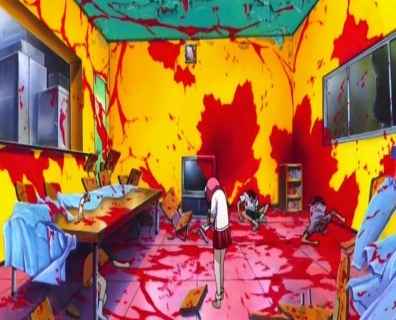
Naruto, Samurai Champloo, and Aldnoah.Zero: Politics and Temporality
While series like Elfen Lied and Attack on Titan are overtly gory, not every anime uses their themes of violence as obviously. The final portion of this article will touch on series which express violent themes more subtly, but still have themes similar to those present in the previously mentioned series. While Naruto, Aldnoah.Zero, and Samurai Champloo all have vastly different styles, stories, and aesthetics, each of these anime employ violence in one or several of the following ways: to express the nature of a political order, to accentuate the time period in which it is set (as well as the social nuances that accompany that time period), or to create a commentary about the social situation of the audience itself.
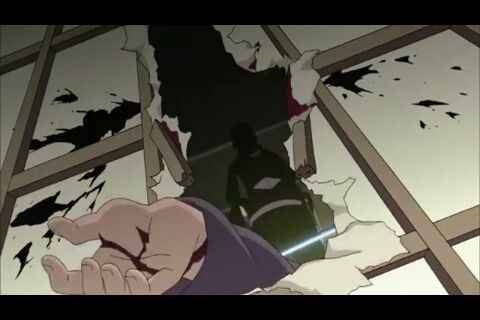
Masashi Kishimoto’s Naruto is a series that is both well known and popular. While it has not received much criticism for the violent themes that are present, fans of the show cannot ignore the fact that the world of Naruto is fundamentally rooted in violence. In the interest of those who are not familiar with Naruto, the show follows a young shinobi, or ninja, named Naruto. Naruto lives in a world which strongly resembles feudal Japan in its political structure; it is divided into various lands (Fire, Wind, Lightning, Water, etc.), each having its own daimyo, or lord, as well as a “hidden village”. Hidden villages represent the backbone of each land, since the structure of these villages specifically hinges on producing young shinobi who make a living carrying out missions, fighting, and protecting the village. The political structure of the world of Naruto is particularly important, because one quickly discovers that there are few treaties, if any, in place to keep the peace. Rather, any form of peace that has been achieved has been gained through a stalemate similar to the Cold War between America and Russia: Each land resigns to not attack another based on the strength of their hidden villages.
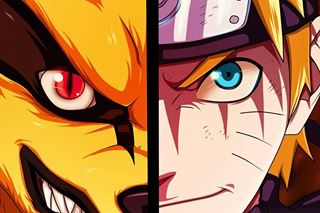
At the center of this stalemate there are the jinchuuriki, humans who have had a tailed beast (bijuu) sealed within them. The bijuu, which were created by a legendary shinobi of the past, are some of the most powerful beings in the world of Naruto, and thus a village that is in possession of a jinchuuriki, or has the power to control a bijuu, are at a clear advantage; indeed, there are many fan theories out there which liken the tailed beasts to nuclear bombs. In addition to possessing an immense amount of power, those who have had tailed beasts sealed within them are under constant strain, whether it be from the beast within or the outraged humans on the outside. It is depicted in the show quite frequently that housing a tailed beast comes with extreme psychological turmoil- there has been many a scene where Naruto, who is a jinchuuriki himself, must face his own beast who is struggling to free himself by breaking Naruto’s will and taking control of his body, often offering Naruto power in exchange for his freedom. Additionally, those who are holders of tailed beasts face constant oppression and discrimination from their fellow countrymen. Naruto himself, who grew up without parents, is shown to be constantly ignored or ridiculed by his fellow villagers, with only a select few ever showing him any kindness. In addition to the belittling nature of a jinchuuriki’s existence within their own village, they are also targeted by outsiders who lust for their power; the terrorist organization Akatsuki makes it their mission to capture and extract all of the tailed beasts from their containers, the process of which results in the jinchuuriki’s death, in order to achieve their ideal “world peace”.
Aside from the tailed beasts and their holders, the Uchiha clan is another one of the main aspects of Naruto where violence rears its head. Having been around since the formation of the first hidden village- Konohagakure- the Uchiha have been consistently oppressed and reviled by their cohorts since before the day Konoha was formed. The Senju clan, a former sworn enemy of the Uchiha, forms a coalition with them to end the fighting and form Konoha together. However, the Senju seize power within Konoha following this, putting the Uchiha on the back burner due to their fear of their visual prowess called the Sharingan. The Sharingan, a powerful clan trait though it is, was a source of fear for the Senju specifically because such a power grants the user the ability to control a tailed beast. As such, the Uchiha represent an existential and continuous threat to the social hierarchy that the Senju have put in place in Konoha. Tensions rise as the Uchiha grow to resent their lot in life, forced on them by the oppressive Senju, until it reaches a breaking point: the Uchiha are slaughtered in the name of “peace”.
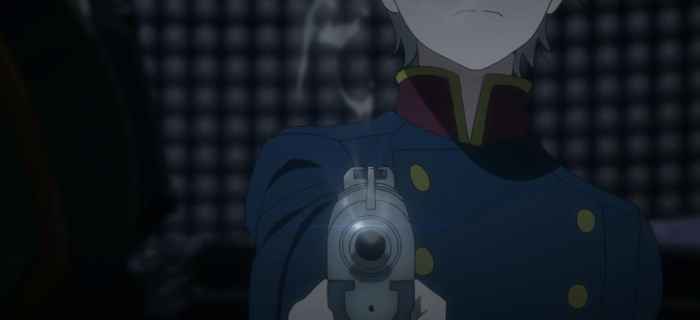
Aldnoah.Zero, on the other hand, is a mecha anime released in 2014 and created by Gen Urobuchi, who is also the creator of Psycho-Pass. Like Urobuchi’s other works, Aldnoah.Zero provides an interesting commentary on political strife and racial tensions with which many of us are uncomfortably familiar.
Taking place in an alternate universe from our own, the world of Aldnoah.Zero is one in which an alien hypergate was discovered on the moon in the year 1972. After discovering more alien technology (later on referred to as Aldnoah) part of humanity migrated from Earth to Mars, hoarding the technology from the rest of humanity. Tensions rise between the Earth humans and those on Mars, and eventually in the year 1999 the Vers Empire (the Martians) declare war on the people of Earth. The two forces battle on the moon until the hypergate that links the Martians back to their home planet is destroyed. The day marking the start of this war is later referred to as “Heaven’s Fall”, referring to the falling debris of the moon that devastated Earth’s landscape and killed many. Unable to return to Mars via the hypergate, the remaining members of the Vers Imperial Army establish space stations which orbit Earth and house both the generals and their underlings, and establish a ceasefire with Earth. This story is thereafter whispered tensely between Earthlings when discussing the humans on Vers, that day having instilled fear and resentment in the hearts of the humans on Earth.
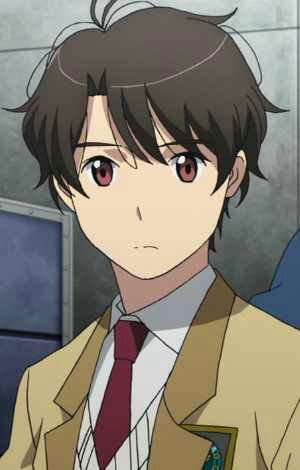
In addition to illustrating the tediousness of the relationship between Earth and Mars as a whole, the themes of violence which are present in the series may also be used to illustrate the emerging racial tensions between humans on Vers, and those on Earth. Despite having both originated from Earth, Vers has developed technology vastly superior to Earth’s, and surprisingly quickly. Due to this, the Martians have begun to view themselves as an enlightened state of humanity- the next step in the human evolution. This prejudiced view held by the Martians is mainly illustrated through how they speak about Earthlings, as well as their treatment of them. The character Eddelrittuo, a maid to the Princess Asseylum of Vers, displays her distaste for Earth humans frequently; in one of the first scenes of the show she is shown speaking with the Princess about her upcoming trip to Earth. She warns Asseylum, who is fond of Earth humans, that they are a “lower breed” than the humans of Vers, and she would do best to be cautious around them. Additionally, Slaine Troyard, one of the main antagonists of the series, was born on Earth but lives with the Martians. As such, Slaine is the subject of constant derision, ridicule, and abuse, and is often pinned with the blame for the wrongdoings of others.
While it is obvious that Aldnoah and Naruto are completely different on many grounds, the two series do share a few things when it comes to the violent themes expressed in each story. Like Naruto, Aldnoah’s violent themes are the result of unstable government relations; additionally, both series take place during a time where one faction (whether it be the Senju and the Uchiha, or the Martians and the Earthlings) have wronged one another in some way, thus opening up what John Locke calls a “State of War”. A state of war is brought about by a culmination of “enmity and destruction” that results when one makes an attempt on the life of another; the wronged party is thus allowed to take action (perhaps more aptly called revenge, here) until the offending party is dead, or makes peace. Without this resolution, the state of war continues between the two parties involved in a rather tedious state wrought with tension. Following this model, both the worlds of Aldnoah and Naruto are rife with turmoil, which displays itself in the form of violent tendencies and a propensity for war.
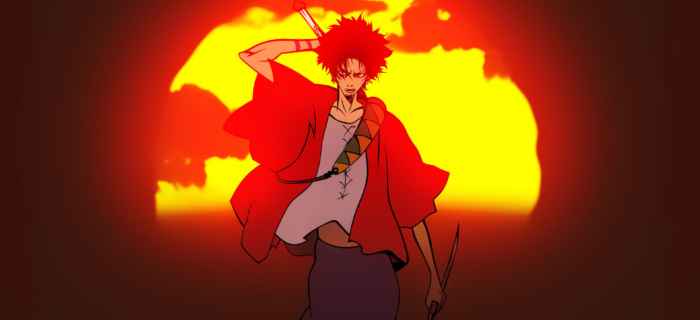
Samurai Champloo is an animated series which ran from 2004 to 2005, directed by Shinichiro Watanabe. Like Naruto, Champloo has a setting that is meant to be reminiscent of historical social and political structures. In addition to Champloo’s legacy of its anachronistic mixture of the Edo era and modern American hip-hop, the show is also extremely violent, since it centers around a rogue swordsman named Mugen, a ronin (masterless samurai) named Jin, and their traveling partner Fuu, who is going on a quest to find “a samurai who smells of sunflowers.”
Because Champloo is neither as long nor as intricate as Naruto or Aldnoah, it would seem that the main reason for the show’s displays of violence is to illustrate the perceived brutality of the time of the samurai, as well as for dramatic effect and entertainment value. Despite Champloo‘s aesthetic propensity for violence, there are scholarly musings that indicate this stylistic choice was in fact extremely pointed. As Paul Dunscomb writes in The Dynamics of Cultural Counterpoint in Asian Studies, Watanabe’s series was released during a time of economic and spiritual crisis in Japan during the economic downturn following the burst of its so-called Bubble Economy. During this time, Dunscomb points out that the question the Japanese were desperately trying to answer was one of identity; “There was no unified message about what the Japanese should transform themselves into and the most fascinating aspect when examining this debate is the way in which it highlighted areas of hope and optimism, as well as resignation and despair, over the potential of the Japanese people to reinvent themselves.”
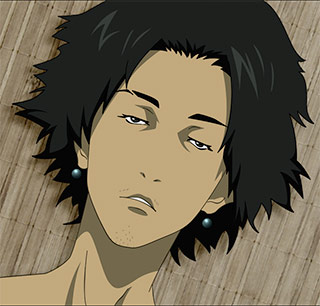
As such, the journey of Mugen, Jin, and Fuu may in many ways represent the journey of the Japanese people during this time- that is, one that was full of hope for the future, but was also wrought with difficulty, anger, and strife. There is possibly no better vessel for these emotions than the concept of the samurai, which early modern Japanese historian Mary Elizabeth Berry “notes that in return for the values of loyalty and selflessness which they supposedly embody we grant the samurai the privilege of resorting to unlimited violence.” These emotions are laid bare through Watanabe’s choice of juxtaposing bright colors and an innovative, hip-hop inspired aesthetic with brutality and bloodshed. When compared to the other anime featured here Champloo may appear to break the mold, or perhaps the entire argument. However, had the show not been executed in this manner, one may wonder if it would have been as popular and artistically striking as it turned out. First and foremost, Champloo is present in the article to articulate the value of violence in art and entertainment, especially during times of spiritual and cultural upheaval. While many of the series investigated here use violence to illustrate the turmoil and dynamics of individuals in the show, Champloo uses violence to illustrate the social unrest of its audience.
The violence that is so often present in Seinen and Shonen manga and anime is often accused of being over the top and detracting from the plot. The point those who support this argument are trying to make is that you don’t need violence in order to make a successful and enjoyable show. While certain series do indeed utilize violent themes for solely for excitement, by delving deeper into the worlds of these series, it becomes clearer that the purpose of violence in shows like these is not merely entertainment value. Rather, transgressive themes and gore in these series is used to develop pivotal characters, as seen in Tokyo Ghoul and Attack on Titan, or to highlight more subtle themes of violence that viewers might miss otherwise, like in Psycho-Pass or Elfen Lied. Further still, violent themes may in fact be necessary to properly illustrate the state the world of the series is in, as one may see in Naruto or Aldnoah.Zero; still further, the violence in certain Japanese animation can provide important social commentary for its audience, as seen in Samurai Champloo. Perhaps, then, the question should not be “why is there a need for so much violence?” but rather, what is it about its presence that bothers some viewers, and what does that say about the themes that creators like Lynn Okamoto and Sui Ishida are attempting to bring to the forefront of the viewer’s mind?
What do you think? Leave a comment.
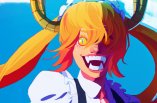
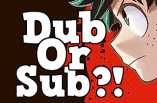
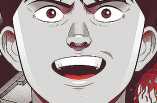
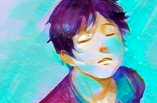
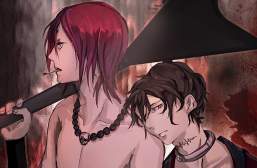
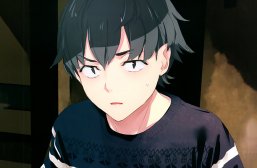
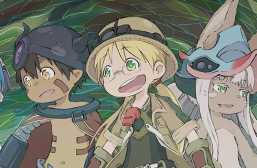
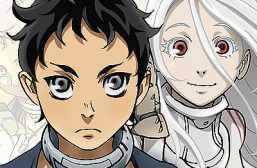
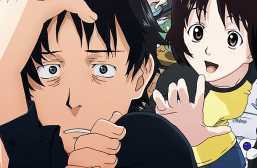
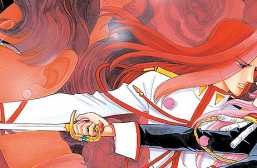
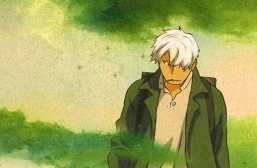
My parents took the approach of exposing me to what the world is really like when I was a child and I turned out fine. If things like anime and video games really did make kids violent, we should have a generation of murderers and serial killers by now.
Anime and games aren’t at fault. The real issue is how the parents ultimately treated their kids.
Speaking of media acting as mirror to the real world. I can’t help feeling that some media (eg. news) starts acting more like magnifying glasses. They depict small violent events and make it look bigger.
I would certainly say that violence in the media does not really do much. Look at all the stuff from our history, such the fairy tales that we now considered beloved, such as Snow White, Cinderella, and Beauty & the Beast, and somewhat including The Little Mermaid. They are all water-downed these days, some of which that even the people that do the Grimm fairy tale anthologies supposedly did not want to put in the original version of the tale. However, the kids from those times certainly seemed to turn out right, since many of them are our ancestors.
Aldnoah sounds like the first anime in ages that I want to see! The last I watched was Ergo Proxy.
I highly recommend it! And it isn’t too long either, so it won’t take up too much of your time.
great music, season 2 sucks tough
Ah, Tokyo Ghoul. A story about a boy who, after a bad date with an aggressive woman, has female organs transplanted into him and starts to experience weird and unwelcome urges towards the flesh of his best guy friend.
Then, he meets a girl who beats him up literally every time they see each other, which he seems to be ok with, and the first time they go out together she takes him to get fitted for a gimp mask.
Later, he falls under the influence of a conniving older man who secretly gets off on huffing a handkerchief that has the boy’s scent. He tricks the boy into attending a pretty extremely deviant evening club full of diabolical hedonists that he’s completely unprepared for, but — spoilers! — the boy somehow escapes with only a moderate amount of trauma.
After that, the subtext gets even subtler.
I gave this anime like 4 episodes. This “world building” and “charachter development” everyone seems to find are, to me, just an excuse to give those “hardcore otaku” more meaningless “mature gore”. Seriusly, I could forgive the gore like in, say, Gantz or Shingeki no Kyojin, but Tokyo Ghoul was quite flat, well, gotta say I didn´t watched the whole thing and the manga readers give a lot of praise to the story, but as interesting the story set-up is, is burned down with it´s cliché characters (the new guy, the pro-veteran girl, the homosexual weirdo, etc). I wouldn´t recomend this anime to anybody, including gore-lovers.
I barely watch anime, but love some like Death Note, Hitman Reborn and especially Monster.
I finished this yesterday, and loved it. The only problem I had was that the main guy could’ve done more and the pacing could’ve been slow. I thought it moved too fast at times in my opinion.
In my opinion, Japan serializes such shows to open the eyes of viewers that whatever life throws at them, they have to deal with it. While America continues to shelter their children to false truths about the world, sugar coating facts to save them from the suffering of knowing what reality is. Anime is not an outlet for viewers to imitate the actions they will see. It is just a mild preparation for them to face the world head on and to expect the unexpected. Life is not just handed unto you on a silver platter, its more complicated than that.
Brilliant article. Are there any other series like Tokyo Ghoul that mix ultraviolence with character development like this? Other than Attack on Titan. Sometimes I’m just in the mood for some decently violent anime that also has great characters.
If Tokyo Ghoul appealed to you then I’d highly suggest Deadman Wonderland! If you aren’t averse to reading manga, too, I’d strongly recommend Dolly Kill Kill! Both are extremely violent, and follow Tokyo Ghoul and Titan’s model of violence for the evolution of the hero character.
I would recommend Hunter x Hunter 2011, it’s on Netflix and CrunchyRoll. But don’t let the extremely childish cover-art and first few episodes fool you the show is actually very violent.
Hunter x Hunter is definitely one I should check out. My younger brother has been watching it and loved it. We both read the manga around the same time, so I should be looking towards checking it out.
I think everyone here should try out Elfen Lied. It’s hard to get through the first episode. It’s very violent and some of the characters are a little flat but it really builds.
My favorites are artists like Hayao Miyazaki (Spirited Away, Poco Rosso, Ponyo, Howl’s Moving Castle) who does quality stuff without visual violence.
I kept trying to comment on this but the site keeps logging me out whenever I try for whatever reason, so I will just do it this way… But, it depends on which movie you’re talking about- although Miyazaki does not often show violence, works such as Princess Mononoke and Nausicaa of the Valley of the Wind do have some depictions of violence!
Violence is embedded in humanity. To depict a version of life without any form of violence or conflict would portray a totally fake and unrealistic form of living. It would be difficult for the viewer to relate or connect to a medium of entertainment like that.
I love this article but I feel the need to point out that both Tokyo Ghoul and Attack On Titan have mangas that are still ongoing. Another series that would probably be neat to explore and analyze with questions and insights like this is Dolly Kill Kill (which is also ongoing but is apparently nearing its conclusion) or Akame Ga Kill (which finished earlier this year).
True, the manga is still continuing and a third(?) season of Tokyo Ghoul has just been announced! However, I don’t think this adversely effects their ability to be analyzed in this way. I enjoy Dolly Kill Kill, but was trying to focus not only on series with which more people would be familiar, but also ones that had been released as anime. Thank you for reading!
It’s interesting to think about, since anime and manga both are rather liberal based on genre and target audience. While some do go over the top and uses violence and gore as its main selling factor, others tend to dive into the psychological core of the viewer, that is it beats into them the idea of a dark and merciless world that, in certain ways) is an interpretation of our own.
Exemplary analysis.
Some violence in anime has no real purpose other than gratuity. I don’t necessarily dislike those anime but it is clearly different from anime where the violence has a larger purpose like AOT or Tokyo Ghoul.
Elfen Lied and other anime of this sort is horrific because the physiological factor impacts the viewer after the fact they have seen it. While in-show, we see blood, guts and gore fly about, the implications of suffering (and its consequences) only become apparent (to me, anyways) after I set the show down. Violence is not dark in itself, but the factors that motivate it are decidedly more intimidating.
I believe that was more the point Elfen Lied tried to make. Showing the injustice and horrors against the mutants, instead of the sole purpose of depicting violence. The violence was the element that made the series stick around after it ended.
Attack on Titan is commonly confused as a gore anime when it’s really not. Whilst the definition of a gore anime is debatable it’s often considered to be something with lots of blood, and gruesome violence.
I’d agree with you that it is certainly up for debate what constitutes a “gore anime” or not. However, for my specific case, it was never my intention to classify it as a gore anime, rather an anime series that utilizes aspects of gore. Thanks for reading!
My recommendations for violent anime is:
Psycho-Pass
I Am a Hero – zombie manga
Darker than Black
Fate/Zero
Do you have any recommendations?
Try Rainbow: Nisha Rokubou no Shichinin. It is one of the most enjoyable yet dark anime series I have ever watched. The mixed feelings, the sad moments, the happy moments, all the things that happened were epic. It might be very brutal, but it also is very meaningful, inspirational and moving.
Seconding Fate/Zero. Amazing animation, diverse adult cast, action packed and amazing characters. While not that gory (with the exception of some episodes) it does cover extremely dark themes and situations. Also, the show is a breath of fresh air due to the fact that all the main cast are adults and not highschoolers. Plus, its written by Gen Urubutchi, the master of making characters suffer. Plus, the show is a battle royal (similar to the “hunger games” concept) full of heroes from history killing each other. It’s really worth a watch!
AKAME GA KILL
I’m currently going through it and it’s pretty dark and gruesome so far
Berserk. If you are considering Berserk, and have never read the manga and no nothing of the show, I highly recommend you watch the movie trilogy rather than the TV show. It has some weird CGI in the first movie, but it gets used less and looks better in the sequels.
Corpse Party: Tortured Souls an adaptation from a PSP game of the same name. The title says it all.
Shigurui is is pretty gorefest-y.
Psycho-Pass is one of my favorites. Madoka Magica gets pretty dark later on, too. Saya no Uta is excellent, as well, but it’s a VN.
Berserk, Claymore, Gangsta, and Hellsing.
Anime is really an art form and not a genre per se. Much like their manga has been for quite a while, it has a large variety in tone and subject matter and what most people see is merely the tip of the iceberg of teen and child oriented fare. The extreme nature that the subject matter can delve into though is merely a common backlash to their general bottled-up type of society. They need an outlet for their inner feelings and their fairly repressive social structure basically builds to an extreme in their artistic outlets.
I agree that anime is not a genre, it is an art form which may be partitioned out into different genres. I think that I tend to disagree with your last statement, however; assuming that I have read/interpreted your comment correctly, you are implying that the “repressive social structure” of Japan causes artists to lean toward a more “extreme subject matter”. However, while the focus of this article is anime, anime is not the only place where you will find violent themes similar to those discussed here. Nor is Japan the only place where animated shows like the ones discussed here are prevalent- I think these are important aspects to consider when making a blanket statement such as the one you put forth here!
You know whats funny one of the most violent anime/manga i have seen period is also one of my favorites also its story is god damn amazing which is berserk
Majority of animes have lost their fundamental focus of the medium.
I love these articles on anime. I learn so much! Thanks for a great read. There was so much here.
I think violence is necessary in stories because is a part of human nature and, as you said personal growth. Good article! You really chose good anime to discuss because each of them have some level of complexity involved in the plot.
Blasting article you have here. Kudos!
I love many of Urobuchi’s works, but Aldnoah:Zero is one of the worst, as it exacerbates his frequent problem with writing decent characters, which would be fine, but this series hinges more than any of his others on character to work.
Supporting characters weren’t particularly fleshed out and so deaths had very little impact, which a shame, as they often had hints of being more interesting than the protagonist. It is fine having an extremely intelligent character such as Inaho, but nothing posed him any sort of real challenge, and he was a dull protagonist. Fortunately Asseylum was relatively deep, so if you are planning to watch, do it for her and Slaine.
Besides the first and last episode, the series became increasingly predictable as anything and every decision made was based more on plot contrivances than logic. There is a pivotal early episode where a simple fact-check could have resolved the entire conflict, but no, rather than actually be original and take this mecha series in a new direction, we continue the well-trodden alien attacks earth for the sake of attacking route. This would also be alright, but the whole rationale for having these multiple caricature villains conquer is very shallow; in fact, the reason for their divergence from humanity (not a spoiler, part of the orientation) really doesn’t hold up to scrutiny.
Good essay. You strongly identify and support your points, and you take a look at it in a fairly unbiased way too.
When discussing the use of blood in anime, it was actually explained in a special feature on a Berserk DVD. I forgot what it was, but basically, blood is the sign of life of the Japanese culture, so when someone gets a fatal wound or something, they exaggerate the effect to symbolize the loss of life. That’s probably horribly paraphrased. I haven’t watched that DVD in years.
Screw anime, their obsession with, violence, generic storylines, inferior complexes when it comes to women just scares me.
Just hope you never get into underground/alternative manga.
Im going to go with the fact that the anime I watch probably isn’t as violent and bloody as movies with real people in it. In anime there is a lot of blood but a lot of the time when there is a leak of blood, it’s only a generic red line down someones back with some splash of that “blood”. So yeah it’s violent but I mean at the same time it’s a drawing so you don’t take it too seriously. Unlike some real movies which can go a lot crazier just because of the fact that it looks real.
Sweet piece. Nice solid points that I can agree with fully.
I absolutely hated the ending of Aldnoah.Zero. I thought one specific character made a few REALLY stupid decisions.
I thought half the characters made incredibly stupid decisions. Also, I raged at one of the early episodes that took one key character and started out with them looking like a brilliant individual, then at the end of the episode devolved them into a complete moron – to the extent that the beginning would be fundamentally improbable if not impossible.
Really, all around the character progression in this show is unnatural, with one or two exceptions. I thought the show was really interesting at first, but at the end it felt like they wanted a story they couldn’t quite understand how to make.
Elfen Lied wasn’t that violent of an anime imo. it was pretty good but lots more blood and guts in the anime world.
It’s not just violence. The plot and character (especially) development is absolutely brilliant.
Japan, as a nation, really loves violence. Read up on some of their war crimes during WW2. They make the Nazis look like carebears.
I think violence as a whole generally leans towards a difference in culture. In North America where I live, a lot of things are considered to be grossly taboo’ed. This isn’t the case in Japan though, and ergo they appear to be a little crazy at times.
There are LOTS of things considered taboo in Japan, just different things.
Wars have been a big part of their history. America, on the other hand, popularizes the idea that it hasn’t ever had a war on home soil. Some people choose to deal with it differently.
Not all anime is violent. Just mostly shonen, aimed at teenage boys and young adults, is what is shown on american TV. Japanese aren’t as strict as the Americans when it comes to cartoon violence or gore, which I am very grateful for, because otherwise there wouldn’t be fantastically hilarious shows or amazingly violent action shows.
Elfen lied almost gave me a heart attack.
I haven’t watched much anime since the early 90’s, but what I saw then (and I can’t believe its changed dramatically) definitely is far and away more graphic and violent than anything on TV. It’s not even a tiny stretch to say that.
I really like the comparisons you have made with these shows. You gave me some new shows to watch too, thank you!
If anything thinks anime is extreme in violence, I suggest you start watching some Takashi Miike films.
Japanese creativity is both horrifying and beautiful at the same time. I mean that as a compliment.
I don’t really watch much anime but it depends on the type you watch; some have lots of violence and others don’t.
This article is a helpful resource for explaining to any unfamiliar that anime is not inherently violent, gory etc. Anime comes in genres, just like everything else.
This was a great read. Huge fan of Tokyo ghoul, Attack on titan and Psycho pass because of the way they use violence to tell a story, so in this sense it can viewed as helpful. I came here looking for a new anime to watch after finishing Deadman Wonderland and Elfen Lied definitely caught my eye.
Violence as a theme can be controversial in many respect. But we have to see that it is also an essential part of the same. It might be required for storytelling or simply because the author has to establish a dark theme like wars, survival or character development.
Violence is a part of human nature, there have been incidents of brutal murders or genocide in the real world as well. Everybody knows about their surface but nobody wants to talk in depth about them, seeing it in an entertainment genre like anime keeps the option of non-consumption open.
This is all very stereotypical. As a young anime user myself I will admit there are violent and excessive amounts of gore in select anime but you have gone and picked all the violence out of anime. Kiki’s Delivery Service and other ghiblis are completely child friendly.
While I would not classify myself as a “young anime user”, I’ll agree you are correct that there are indeed “child friendly” anime out there. My argument, however, is not that all anime contains violence. Rather, my argument states that anime that is violent uses the violence for a specific purpose, as you can read above. Thanks!
I agree with some of the comments here. I believe parenting and the environment they grow up is what impacts a kid the most.
Also, there is the whole genetics, but if you have been raised in a violent environment, then maybe violent video games and anime is going to trigger that state of mind even more.
I agree with what you have to say about Psycho-Pass. I’ve only watched season 1, but the themes about dehumanizing people are really important, in the sense of violence, like you argue, but also in comparisons to animals and the use of technology. The enforcers are commonly referred to as “dogs,” which shows how Sibyl views latent criminals. Also, the inspectors and enforcers have augmented reality contact lenses that literally label people as criminals, the label that dominates over their humanity.
This relates to the article I’m writing quite nicely! Great take on this subject, it’s something I wonder about too. Being an AoT fan, I find myself wondering, “Was that even necessary?” It’s a good question to ask when it comes to violent anime, and you gave some pretty solid answers. Cheers!
When most of people who did not even watch anime would say that anime is for kids. They don’t realize the violence exist in the anime and just making negative comment about the adult who watch it. Clearly some of anime has its rating whether its for 15 above and else. Some also did cover the scene of violence by darkened the scenes with blood and cover it with white or black stripes.
Honestly, I feel like there is no real answer for this question. I think it largely comes down to a matter of what you prefer or not. I’m not the biggest fan of blood and gore in anything let alone anime. I tried watching Kabaneri of the Iron Fortress but was turned off by what felt like, to me, an excessive amount of blood going SPLOOOOOOOOSH. However, my aversion is just that I’m not a huge fan of massive blood spurts in general. For the genre and for the plot of Kabaneri, it did make logical sense that there would be quite a fair amount of blood and gore overall. For this same reason, I didn’t have much of a problem with Psycho-Pass since characters exploding into bloody, pulpy messes is part of the psychological aspect of the show. It serves a purpose. To contrast that, we can look at Prince of Tennis. While this is one of my favorite shows from my childhood, I can definitely see its flaws now that I’m not 12 years old anymore. Yes, it’s about tennis, but it also can get randomly violent at times. It’s those kinds of instances that strained my suspension of disbelief. Shonen sports anime have a tendency to be OTT, but when it went as far as characters being hit so hard by a tennis ball that they dented the chain-link fence whilst being covered in blood, I felt the violence then didn’t serve a purpose and wasn’t necessary in the least.
This is very interesting. As an ancient historian with a teenage son who is anime obsessed I am curious as to the role of violence in this medium vs violence in myth or legend… is it not the same thing in a different art form? Therefore, are we not watching violence with the same rapt attention as many of our ancestors?
Saying that violence in anime is a hindrance is the same as saying that violence in movies are a hindrance. Violent anime is a media art form just like any other horror film. It should be the genre that bothers you not the form it comes in.
In Attack On Titan, Eren must commit acts of violence not only in order to survive, but to save those he cares about. The two final episodes serve as an excellent example of this, as it demonstrates that Eren is not a violent person by nature, but by necessity. To survive in this violent reality violence must be committed. That seems to be the message that Armin was pushing with the whole throw away your humanity message. This fits well with the themes of violence and the grey morality of war and conflict.
Amazing article. I have watched some of the anime’s mentioned. I also think that watching these violence anime’s is kind of like catharsis.
Depends on the outcome of this violence, only when we know the impact that anime violence has on viewers directly will we have an answer
Honestly, violence in Anime is like violence in any form of medium. From games to even movies. The violence has to have a purpose, whether that purpose be to emphasize, tell something about a character or even add to the drama of a scene. The violence should be there for a reason and the level of it should be according to what is required. So I definitely agree that violence is a necessary part where the anime needs it.
If violence serves a purpose in a story, then sure. But if it is shown just for the sake of it, then it is trying to be edgy.
Violence, if incorporated correctly, can be a nice addition to an anime (or game’s story). Tokyo Ghoul is an excellent example of violence included in anime. Kaneki starts off as very sweet and naive and my recollection of the first season, he wanted peace between the Ghoul factions and didn’t want to hurt anyone. However, the torture in which you mention, destroy him. The cruel world infects him to the core. This transformation is powerful and the violence explains it quite well. Attack on Titan thrives on violence as well because it is a dystopian setting where humanity is inbetween periods of hope and despair. The first episode is by far one of the most disturbing but powerful in an anime’s debut. Because it had purpose. Not to say violence can’t be included freely, but it needs to have a purpose. Elfen Lied seemed extremely uncessecary and overly simplicsti. While Chi’s spieces is not human, and the treatment they have been given can explain the violence they cause so easily, it’s overkill (no pun intended). It does not, however, explain the demented nature of the children. They are, for all intents and purposes, human and its just not believable to have them commit such an atrocity. But indeed this was necessary in order to “justify” Chi’s killing of them.
ONE PUNCH MAN
Many of my favorite animes have typically been the more gorey/violent ones. With these animes (such as Tokyo Ghoul, Attack on Titan, Elfen Lied, Future Diaries, etc.) there has been this element of realism that have arisen through the gore and violence. It seems to raise the stakes and make what these characters are fighting for more real and immediate — I want to see these characters win and when they don’t, I genuinely feel disheartened. Other animes that do not push the envelope do not affect me the same way. There’s a distance between myself and the characters/story, and I do not feel as involved in the narrative. The violence is key to connection. Seeing the true consequences of opposing these characters makes me feel like I apart of their worlds where punches are not withheld and anything truly can happen.
Great article “ees” loved it. I created my account in this website after reading your article, I loved it 3000
I firmly believe handling conflict is the root of story telling while romance and other genres do it quite well, nothing beats the purest way of doing it using fists and weapons.
Though violence in anime can be used as a character development tool or metaphorically or as a way to emphasize , violence at its core is a debate between different ideologies .When done right it fits really well into the story and hence sucks the audience into the story’s world.
All things said I really loved your way of looking at violence in anime.
I would love to read more of your articles
“Anime that is included in the Shoujo genre, for example, will likely feature little to no violence; if violence is featured in a Shoujo anime, it is often mild and lacks the shock value gore may offer”
That’s not necessarily true–Junko Mizuno writes Shoujo manga and her works are often violent (she’s most known for the older post-apocalyptic series “Pure Trance,” for example).
Re: “Elfen Lied,” I saw the Diclonius as representing, not people of a different race, but people with some kind of disability or neurological condition, since the root of their problems is that their neurology causes them to act out in violent ways.
of course it is not “entirely true,” hence the inclusion of the word “likely” and the phrase “little to no violence.” one can certainly find exceptions to this rule. However, “typically,” shoujo does not feature violence––or at least not the same type of violence––that shounen offers.
as to your second comment, certainly one can draw parallels between the diclonius and disability. however, since research material concerning this particular fandom (elfen lied wiki, for example) refers to diclonius as a “race,” i chose this route instead. both are valid interpretations of the position the diclonious occupies within the manga and are worth exploring.
This was an interesting read, In particular, I loved what you had to say about Tokyo Ghoul. I had written off the torture scene as unnecessary and a bit indulgent (not because I was upset by the violence but because I thought it was a weird choice for Kankei’s arc), you definitely changed my mind about it though.
Naruto couldn’t have worked without the violence. A ninja/shinobi’s life is ultimately filled with death (look at Kakashi Hatake). Plus, the fight scenes were awesome, especially in Shippuden.
I found Tokyo Ghoul disturbing as a whole, especially with that torture scene. And, no, nothing you say will make me watch Elfen Lied.
You don’t understand the nature of violence. More often than not it has no purpose, that’s its true nature.
Violence doesn’t have an inherent nature. In any case, the violence’s nature is a reaction to a circumstance: a variable context.
This article is trying to justify something that has little justification. The reality is that violence outside of hunting for food or defending territory or loved ones is absolutely unnecessary. Most of these animes that are criticized (rightfully so) glorify extreme amounts of violence and absurdly over the top levels of gore to “explore deeper narratives” of human society. But the violence overshadows most of the story telling especially considering most people who enjoy such shows don’t typically look that deeply at the underlying meanings. What’s more there are so many series, films and even other types of anime that do a much better job at exposing human faults and horrors without obscenely violent depictions. Animes like many of the ones above are just excuses to put such content out there to stimulate those who enjoy it, which probably includes the makers of such anime, or to vent disturbing things already present in people’s consciousness. And though, not all children exposed to such things turn out to be murderers but some do; as a result of the trauma that may or may not resonate with their own lives or that the animes cause themselves. But what’s worse is not the influence but the desensitization. If you put violence and gore in front impressionable people (like most children are) and say it’s okay to watch this because it’s preparing you for real like, what you’re actually doing is encouraging apathy and other unhealthy responses to adversity. If you like this kind of stuff, then you like it, and that’s your business, but don’t try to justify things that are just wrong.